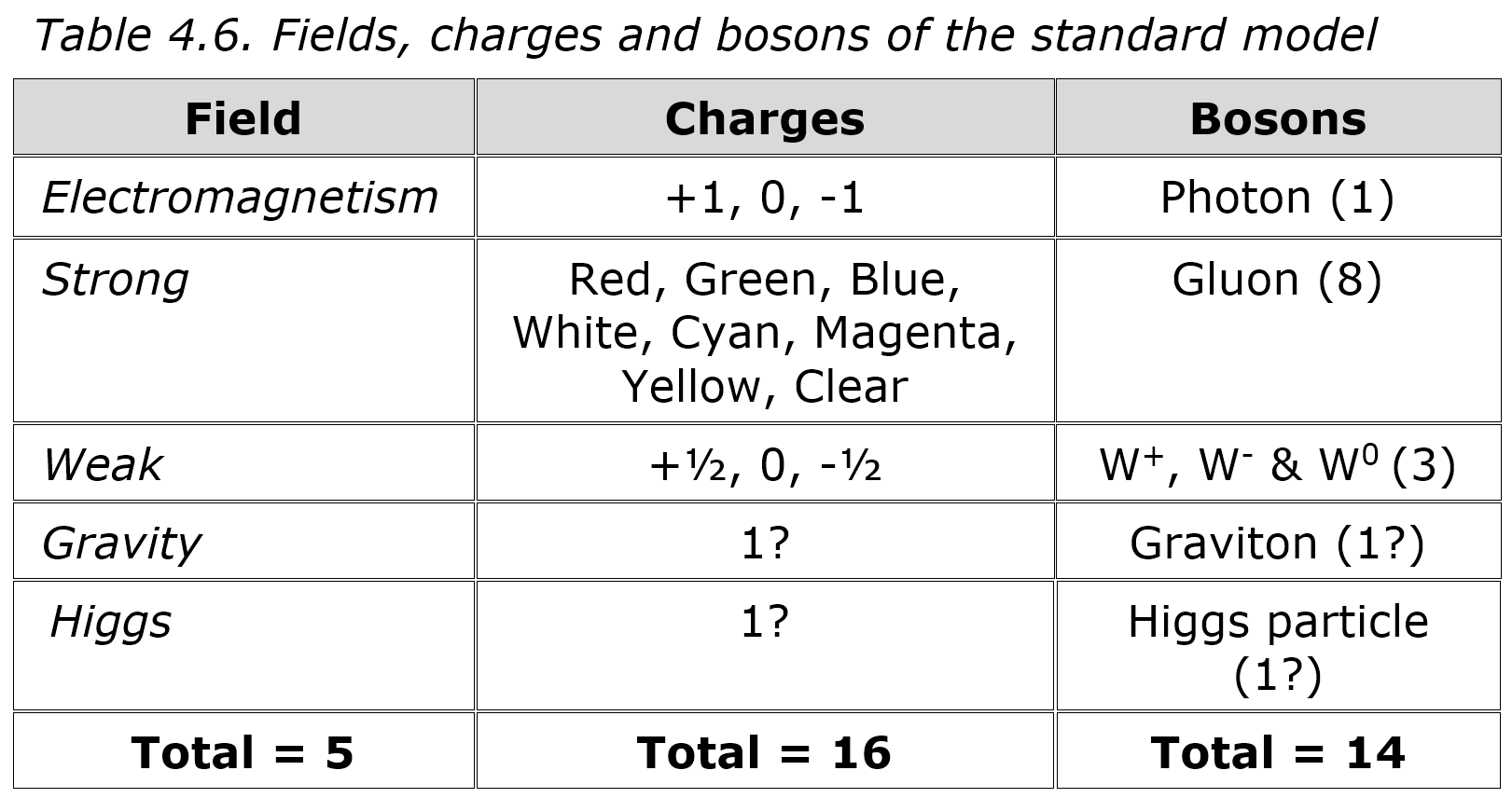Occam’s razor, not to multiply causes unnecessarily, is the pruning hook of science, but the standard model ignores it. Once, physics was just about mass, charge, and spin, but now it has isospin, hypercharge, color, chirality, flavor, and other esoteric features. The current standard model needs sixty-two particles (Note 1), five fields, sixteen charges, and fourteen bosons to work (Table 4.6). If it was a machine, one would have to hand-set over two dozen knobs just right for it to light up, so it isn’t preferred today because it is simple.

For this complexity one might expect completeness, but the standard model can’t explain gravity, proton stability, anti-matter, quark charges, neutrino mass, neutrino spin, family generations, or the dark energy and matter that are 95% of the universe. Its main feature is that with each new finding, it grows, so to explain inflation it needs a hypothetical symmetron field, and to explain neutrino mass it needs another 7-8 arbitrary constants:
Good theories grow knowledge from data as good gardens grow plants from water, but the standard model is like a barren sponge that just absorbs water to make itself bigger. A model that explains new facts by growing itself instead of knowledge goes against science. Particle physics is then stagnant because inventing virtual particles to explain equations after the fact is science in reverse. Physics needs a causal theory, based on quantum mechanics, not a particle toolbox.
Note 1. Two leptons with three generations plus anti-matter variants is 12. Two quarks with three generations plus anti-matter variants and three colors is 36. Plus one photon, eight gluons, three weak bosons, one graviton and the Higgs is another 14. The total is 62.